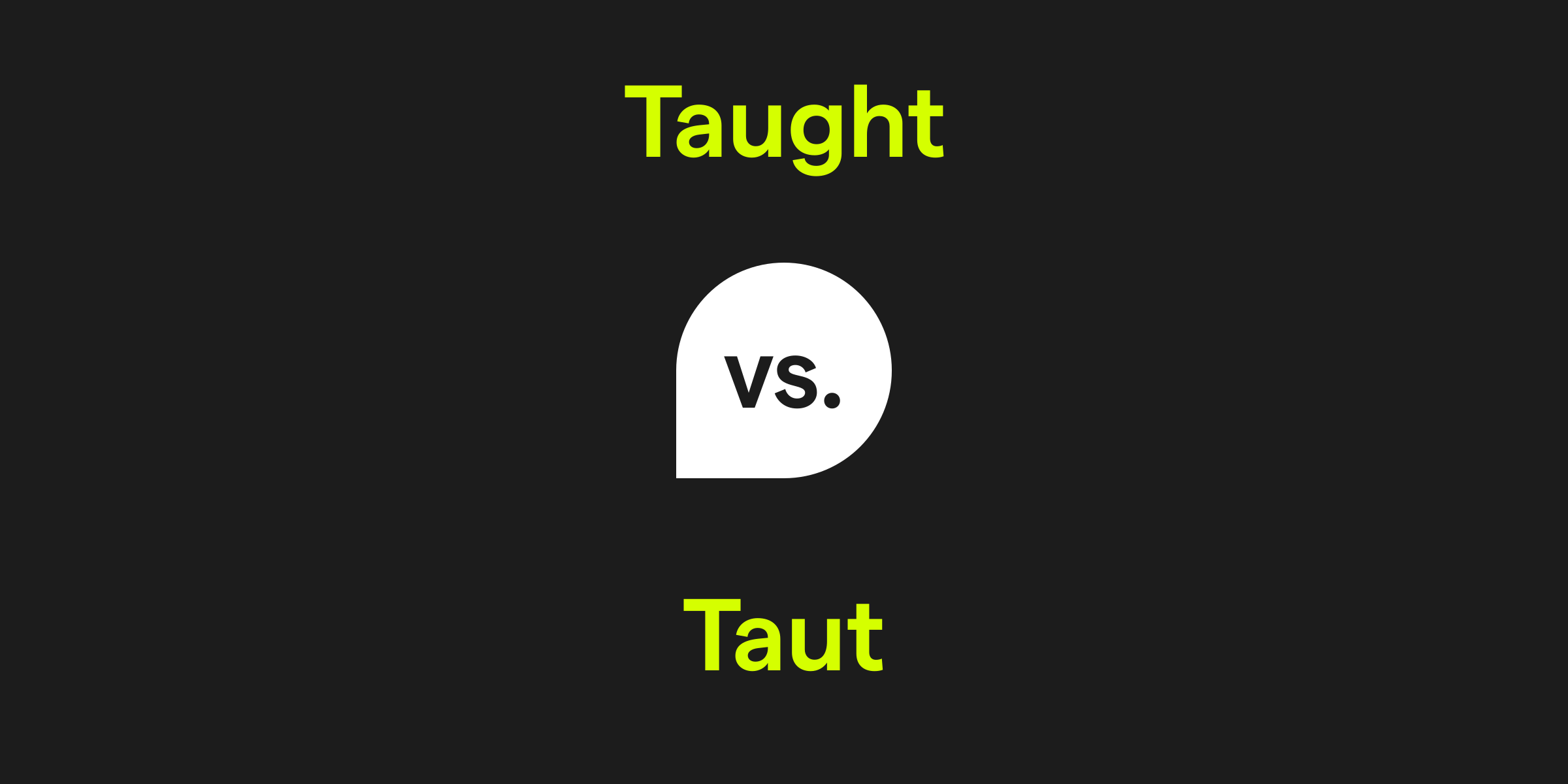Taught vs. Taut: What's the Difference?
Understanding the difference between taught and taut can help prevent confusion in writing and conversation. Taught is the past tense of the verb 'teach,' which means to instruct or give lessons to someone. 'Taut,' on the other hand, refers to something that is stretched or pulled tight, without slack. It's important to distinguish these words by their use: one deals with education, while the other describes tension.

How do you use the word taught in a sentence?
Taught is used when referring to the action of having instructed or delivered lessons in the past. It emphasizes that the teaching has already occurred. It's a regular past tense form, commonly used to speak about past learning experiences or educational activities.
Examples of taught in a sentence
- The methods that were taught in the workshop proved to be very effective.
- She taught French for twenty years before retiring.
- After the kids were taught the basic rules of safety, they felt more confident on their bikes.
How do you use the word taut in a sentence?
Taut is used to describe something that is pulled tight, like a rope, muscles, or skin. It stresses the absence of slack and can also refer to a situation or a person that is tense. It's an adjective, and its use often creates a visual or emotional impact in descriptions.
Examples of taut in a sentence
- The rope was pulled taut and secured to the dock.
- Her face was taut with concentration during the competition.
- He kept his body taut as he balanced on the narrow beam.
Taught and taut definition, parts of speech, and pronunciation
Taught definition:
Taught is the past tense of the verb to teach, which means to give information, instruction, or knowledge to someone through practice, experience, or study.
Taught parts of speech:
Taught pronunciation:
Taught is pronounced as "/tɔːt/", with a long vowel sound similar to the word 'caught'.
Taut definition:
Taut is an adjective that means stretched or pulled tight; not slack. It can also denote a state of tension or stress.
Taut parts of speech:
Taut pronunciation:
Taut is pronounced as "/tɔːt/", which phonetically sounds identical to 'taught'. Despite their different meanings, they are homophones.
Taught is the past tense of the verb to teach, which means to give information, instruction, or knowledge to someone through practice, experience, or study.
Taught parts of speech:
- As a verb: He taught them how to write an essay.
Taught pronunciation:
Taught is pronounced as "/tɔːt/", with a long vowel sound similar to the word 'caught'.
Taut definition:
Taut is an adjective that means stretched or pulled tight; not slack. It can also denote a state of tension or stress.
Taut parts of speech:
- As an adjective: The canvas on the tent was taut and unwavering in the wind.
Taut pronunciation:
Taut is pronounced as "/tɔːt/", which phonetically sounds identical to 'taught'. Despite their different meanings, they are homophones.
Taught vs. taut in a nutshell
In summary, taught is the past tense of 'teach,' implying the act of giving lessons or instruction. Taut is an adjective used to describe something pulled tight, indicating physical or metaphorical tension. While taught is a verb and taut is an adjective, they share the same pronunciation, making them homophones—a prime example of English words that sound the same but have different meanings and spellings.
Get AI Writing Assistance Wherever You Type
Make sure your vocabulary is on point and every punctuation mark is in the right place, no matter where you’re working. Grammarly works across more than 500,000 websites and apps so you can improve your writing without copying, pasting, or breaking focused.

More Commonly Confused Words
Interest piqued? Pore (not pour) over other commonly confused words to help your writing reach peak (not peek) performance.